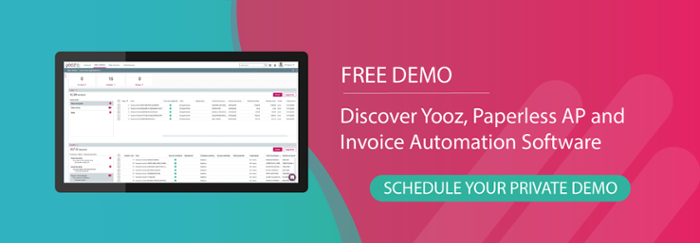“I thought I was good at my job!” mentioned a distressed Accounts Payable professional. “But the CFO is telling me that we pay too many bills late, our cost per invoice is too high, and we have the wrong mix of team members”.
She is likely not alone, either in her own concerns about how effectively she is doing her job and wondering if there are better ways to improve the accounts payable efficiency of her company but also in having a finance leader that is questioning the same for all the accounting and finance functions of their business.
So how does either of them know? How do you?
The Institute of Finance and Management (IOFM) has conducted research for its three-year benchmarking series, with the 2019 Measuring Your AP Performance: Efficiency Benchmarks that addresses these exact concerns. In this week’s blog, we’ll review the four key metrics to help finance leaders manage Accounts Payable goals and improve Accounts Payable efficiency.
Four Key Metrics to Help Finance Leaders Manage Accounts Payable
When it comes to achieving your KPIs and creating the most efficient and effective Accounts Payable invoice and payment process and department for your business IOFM presents four main metrics you can use as a benchmark for how to measure accounts payable performance in your team and organization:
- Paid On-Time Rates
- Cost Per Invoice
- Number of Invoices Processed Per Full-Time Employee
- Mix of Specialists vs. Managers on Your Team.
Let’s dive a little deeper into what each of these metrics means and what Finance leaders should look for along the way.
Metric 1: Paid On-Time Rates
If your Accounts Payable department pays invoices on-time greater than 90% of the time, you are an Accounts Payable top performer. This percentage will be typical of departments that have automated their Account Payable workflow. If you are still struggling along with manual invoice and payment processing your paid on-time rates are likely only around 75% of the time.
Not only could late payments result in penalties, but you are also leaving money on the table by never having the opportunity to take advantage of early pay discounts from your vendors.
Reduce late payments and start contributing to the bottom line!
Metric 2: Cost Per Invoice
There has been much research about how money can be saved by automating the Accounts Payable process based on the cost to process a single invoice manually versus the cost to process a single invoice digitally. The research in the IOFM Efficiency Benchmarks report that we are referencing in this blog is in line with other industry benchmarks. “While the full cost per invoice includes employee benefits, one-time and ongoing automation costs, and other corporate overhead; it should also be an all-in number that includes procurement costs”.
If your processing costs are between $8–$15/invoice, you are still manually processing paper documents and it is time consuming, tedious, and error-prone work. If it’s only costing you between $3–$4/invoice, you are in the digital age and have at least partially automated your invoice and payment processing.
That total potential savings of $11 times the number of invoices you process per year translates directly to the bottom line for your business. And could go towards more exciting things like research and new product development.
Metric 3: Number of Invoices Processed Per FTE
The least efficient Accounts Payable teams—those with little to no invoice and payment processing automation—process only 10,700 invoices per full-time employee (FTE) per year on average as compared to the most efficient Accounts Payable teams—those that have automated the invoice and payment processing workflow—that process twice that amount per FTE.
Imagine if the same number of FTEs could process twice the volume of invoices. That means as your company grows, and the number of documents increases, you could do more with the same headcount.
Even better, reallocate staff to more value-added activities like improving supplier and vendor relationships and searching for opportunities to capture early payment discounts.
Metric 4: Mix of Specialists vs. Managers
Current benchmarks for low Accounts Payable automation companies suggest a greater ratio of lower-level Accounts Payable specialists to managers. And as the level of automation increases, the ratio is reversed, with more higher-level managers to specialists.
According to IOFM’s benchmarking study, “this measure is not intended to be used as a tool for firing or demoting anyone to reset your staffing mix”. Rather, as you lose specialist-level staff to attrition, you might replace them with a higher-level manager position.
With invoice and payment process automation, you need fewer FTEs to manually enter data and track down approvals and more thought leaders to analyze the data and provide leaders throughout the organization with insight needed to make smarter, more strategic decisions.
The Most Efficient Accounts Payable Processes are Highly Automated
To sum up their findings when a business is highly automated with a real-time Accounts Payable automation system like Yooz you can take advantage of early payment discounts and eliminate late payments, drastically reduce the amount of time it takes to process a single invoice, increase the efficiency of employees and free them up for more value-added tasks, and allow for your Accounts Payable departments to be a higher ratio of high-level managers to lower-level Accounts Payable specialists.
For a complete account of the Efficiency Benchmarks report, watch our webinar featuring IOFM Executive Editor, Jess Scheer on demand.
FAQs
What key performance indicators (KPIs) should organizations consider when measuring accounts payable performance, and how does Yooz help track these metrics?
How does Yooz's AP automation solution help organizations reduce invoice processing times and improve efficiency?
Can Yooz's AP automation solution help organizations identify and mitigate accounts payable process inefficiencies?
How does Yooz's AP automation solution contribute to cost savings and ROI for organizations?



